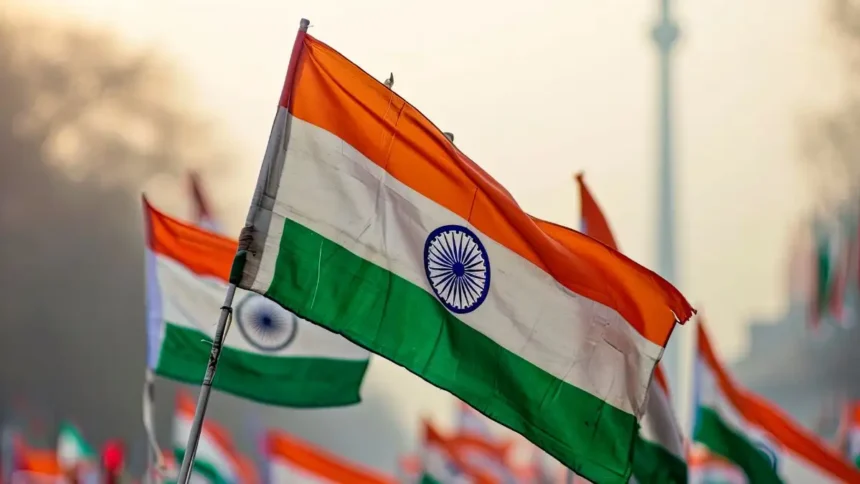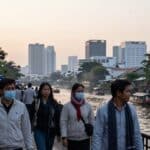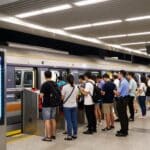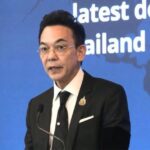NEW DELHI — Cities across India and the world burst with colour today as the country marked its 79th Independence Day. The celebration honoured the moment when India gained its freedom from British rule on 15 August 1947.
From the Red Fort in Delhi to Indian communities overseas in New York, London, and Sydney, millions joined in with pride, remembering those who fought for the nation’s liberty. The day was filled with cultural shows, parades, and a renewed vow to unity and progress.
The morning in India started as Prime Minister Narendra Modi raised the national flag at the Red Fort, a site closely linked with Independence Day. He spoke to a crowd of citizens, dignitaries, and children, sharing stories of India’s progress since 1947.
Modi touched on achievements in technology, the economy, and foreign policy, while calling for action on sustainable growth and fair opportunities for all. His voice echoed throughout the country as the speech was broadcast to millions, urging everyone to work toward a “Viksit Bharat” or “Developed India” by 2047.
Across the nation, cities came alive with flag-raising events and vibrant cultural displays. In places like Mumbai, Bengaluru, and Kolkata, after the flag ceremonies, people enjoyed performances that showed off India’s rich traditions.
Children sang patriotic songs such as “Vande Mataram” and “Jana Gana Mana.” Dancers performed Bharatanatyam, Kathak, and Bhangra. In rural towns, celebrations included local leaders’ speeches, short plays recalling the story of India’s fight for freedom, and sharing sweets to mark the happy occasion.
Big cities also organized parades where police and students marched in perfect lines. In Chennai, the parade along Marina Beach featured floats recalling key moments from the independence movement. Ahmedabad hosted a kite festival, with thousands of tricolour kites filling the sky above the Sabarmati River, a symbol of hope and ambition.
Security was stepped up all over the country, especially in Delhi, where over 100,000 police officers kept watch to protect the mood of the day. The festivities went ahead smoothly, and recent unrest in some border areas did not affect the celebrations.
A Look Back at the Struggle for Independence
India Independence Day remembers the long and often tough battle to end British rule. The fight began in the 1800s and intensified in the early 1900s with leaders like Mahatma Gandhi, Jawaharlal Nehru, and Subhas Chandra Bose. The Indian National Congress, formed in 1885, became the heart of the movement. The Dandi Salt March in 1930, the Quit India Movement in 1942, and the courage of figures like Bhagat Singh gave the campaign fresh energy.
By 1947, with Britain weakened after World War II and pressured by Indian leaders and world opinion, the decision was made to hand over power. On the night of 14-15 August, Jawaharlal Nehru made his famous “Tryst with Destiny” speech as India took its place as an independent nation.
Yet, freedom came at a great cost. The partition that created India and Pakistan led to huge migrations and violent clashes, leaving deep marks on both countries. Independence Day is now a chance to remember that pain, but also to celebrate the resilience and unity that followed.
India’s Independence Day Across the World
The celebrations weren’t limited to India. The Indian diaspora, more than 32 million worldwide, joined in wholeheartedly. In New York City, thousands took part in the India Day Parade on Madison Avenue, organized by the Federation of Indian Associations. The event featured floats, traditional and Bollywood dances, plus speeches about the community’s influence in their new homes.
London’s Trafalgar Square held a vibrant festival with Indian food, music, and a flag ceremony, coordinated by the High Commission of India. Cities like Toronto, Sydney, Dubai, and Singapore held their gatherings, where people sang, shared classic dishes such as biryani and samosas, and talked about their ties to India.
Even in smaller cities across the globe, the excitement was real. Indian students in Melbourne hosted a virtual event with poetry and talks about India’s growth, allowing people from different time zones to take part. In Johannesburg, the Indian community honoured Mahatma Gandhi with a special exhibition, acknowledging his time in South Africa and belief in nonviolence.
These global parties showed how deeply Indian communities abroad feel about their roots. “Independence Day is not just about 1947, it’s about upholding freedom, equality, and strength,” said Priya Patel, a second-generation Indian-American at the New York parade. “It’s about celebrating our identity, wherever we may be.”
Reflecting and Looking Forward
Inside India, the day also sparked thoughtful reflection. National newspapers called on people to face ongoing challenges like poverty, joblessness, and climate worries.
Social media buzzed with hashtags like #IndiaAt79 and #AzadiKaAmritMahotsav as citizens shared hopeful and proud messages. Young activists used the occasion to speak up about inequality, advocating for fair opportunities for all.
Schools hosted essay contests and debates about India’s role on the world stage and the legacy of its freedom fighters. In Hyderabad, tech students released an app featuring lesser-known heroes like Rani Gaidinliu and Usha Mehta.
Businesses also took part, backing community projects and cultural events. Large companies, including Tata and Reliance, supported public celebrations. Bengaluru’s IT firms held blood drives and tree-planting activities in line with efforts for a greener future.
As darkness fell on 15 August 2025, fireworks brightened the skies from the Gateway of India in Mumbai to Kolkata’s Victoria Memorial. Families came together to watch event highlights on TV. Restaurants and food stalls served traditional treats like jalebi and vada pav, adding to the festive mood.
For many, Independence Day summed up the country’s progress, from life under colonial rule to an influential nation with a GDP over $4 trillion and a space programme that recently reached the moon. The day also honoured the sacrifices that made this journey possible and encouraged fresh dedication to a just and prosperous future.
Prime Minister Modi ended his speech at the Red Fort by recalling the spirit of 1947, urging everyone to work, dream, and achieve together. As people listened throughout India and across the globe, a sense of shared hope for the nation’s future took root once again.














